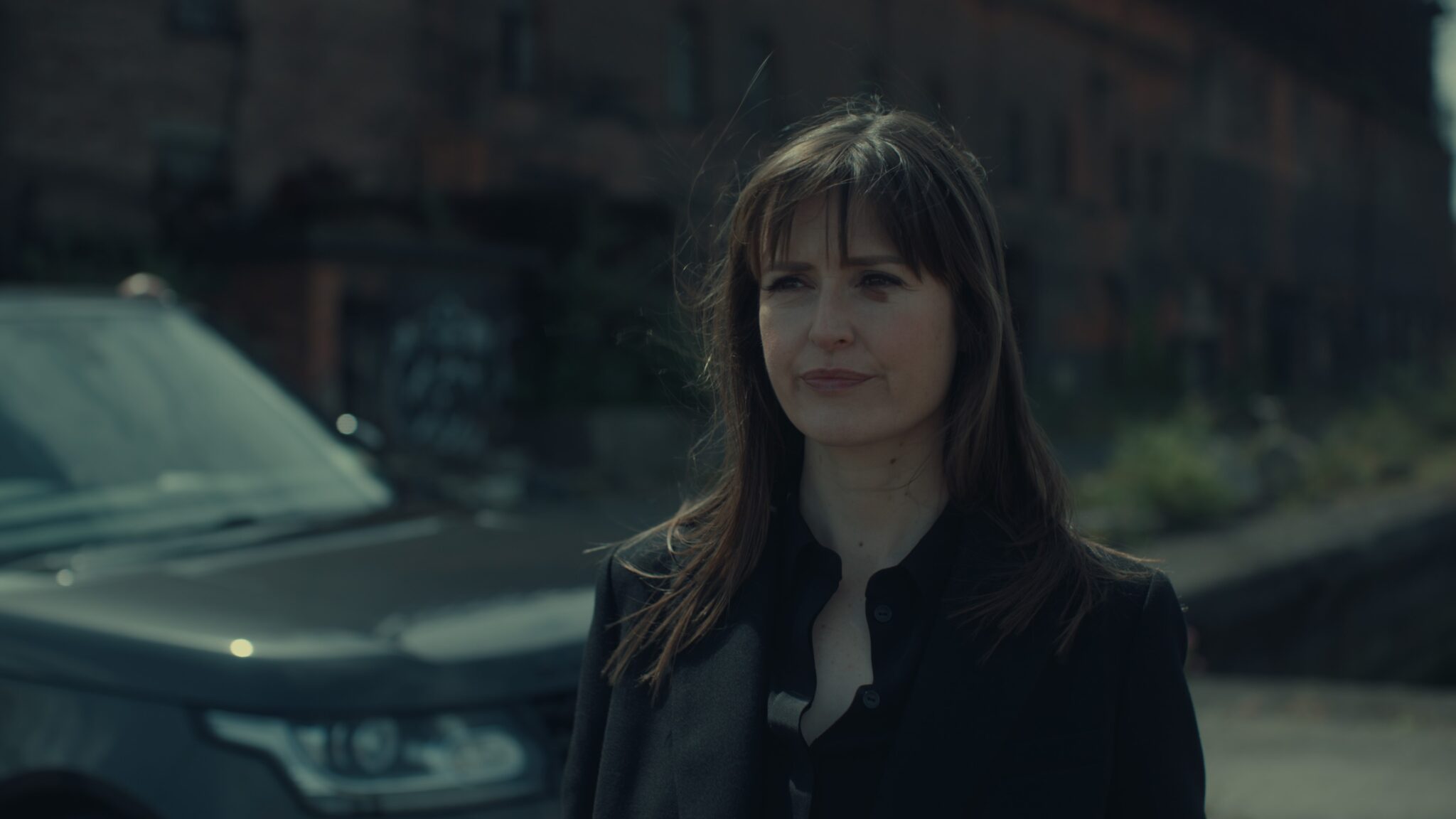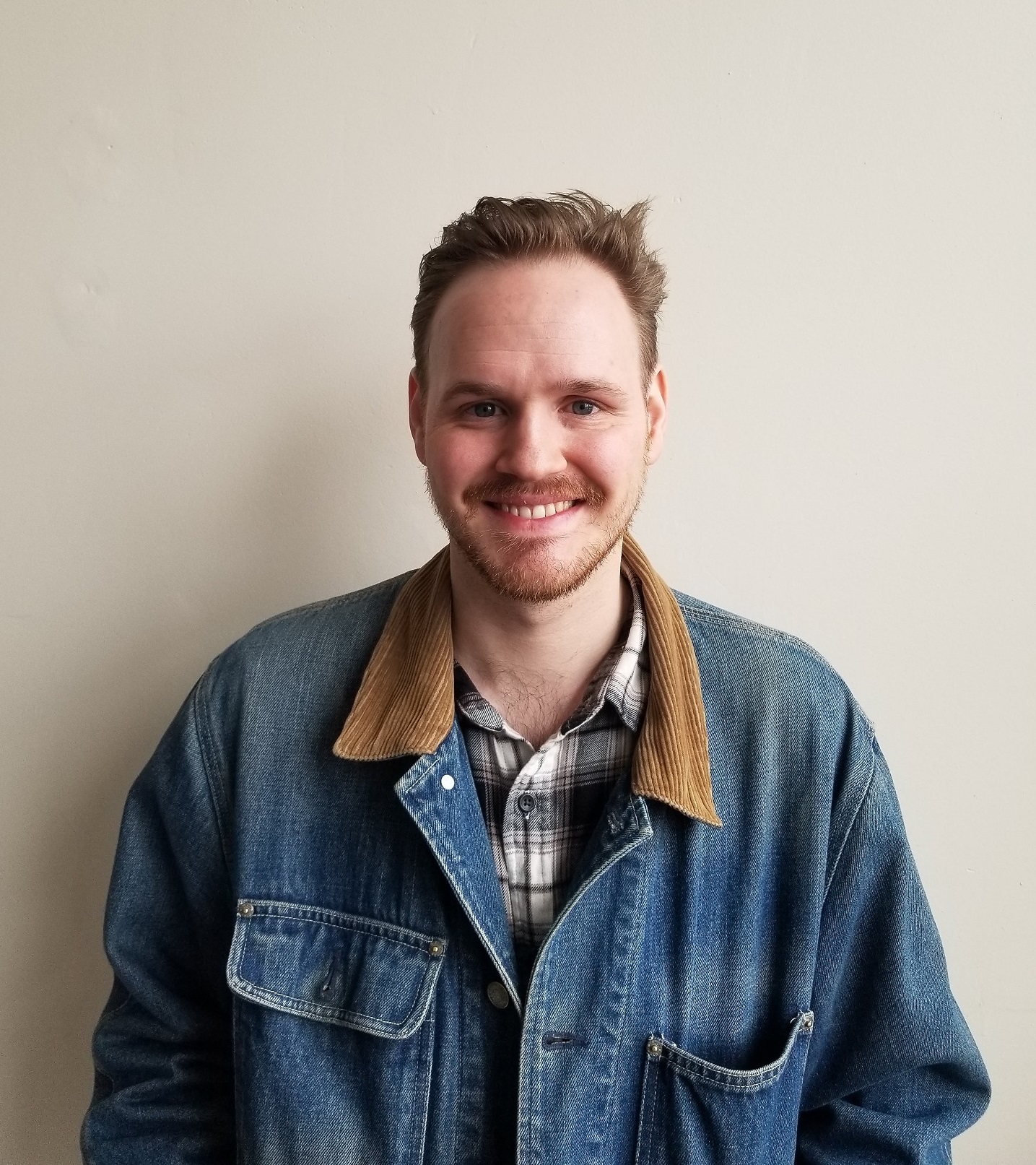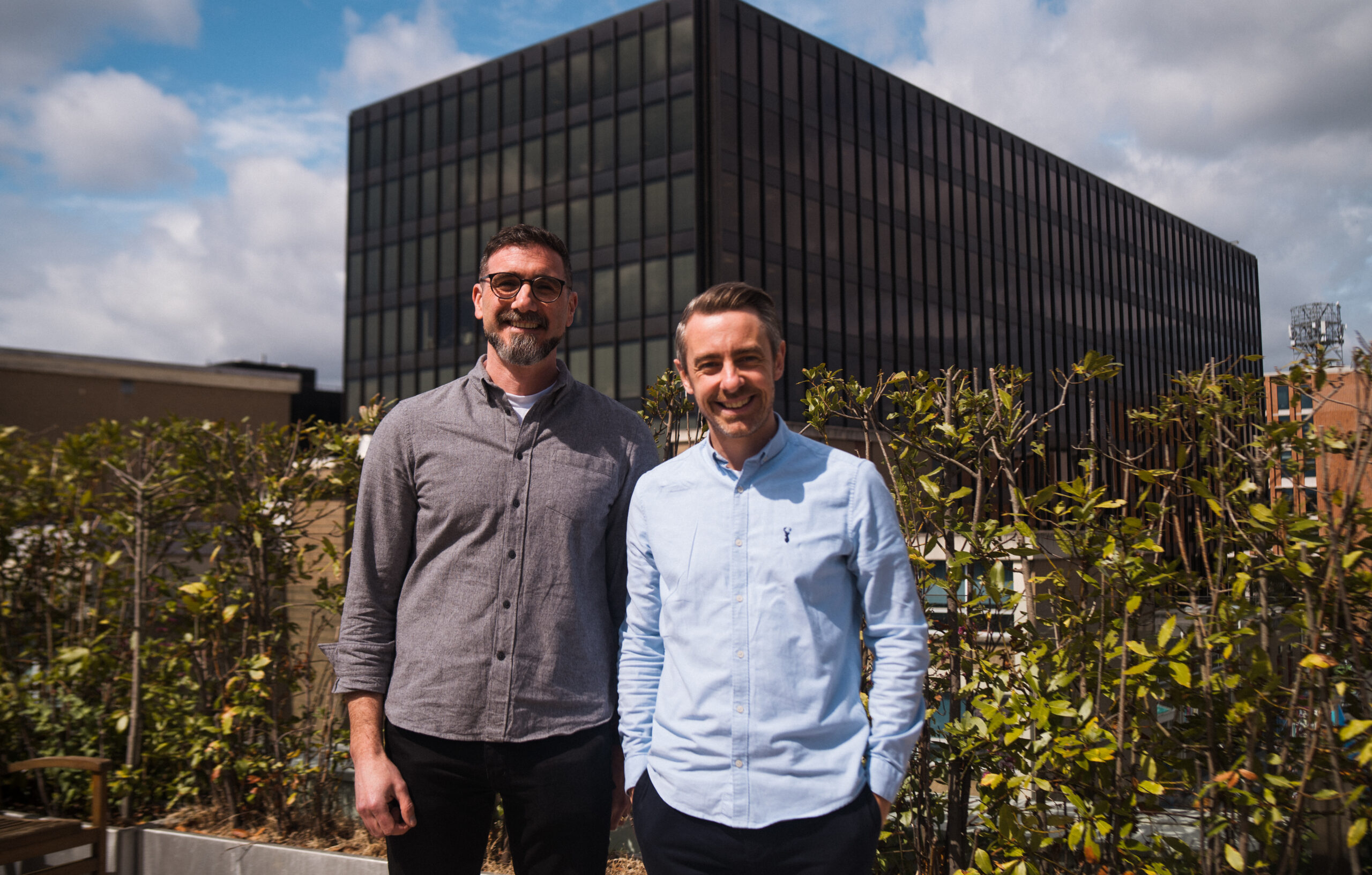Andrew Baird discusses his new film One Way
Film/TV
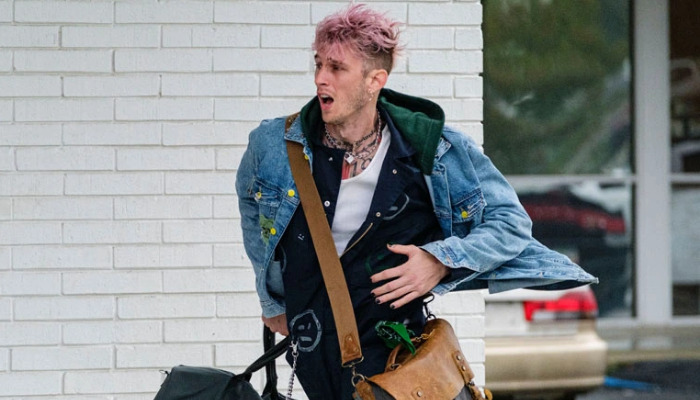
2 September 2022 see’s the release of Andrew Baird’s (Zone 414) One Way. One Way follows Freddy (Colson “Machine Gun Kelly”) Baker who’s on the run with a bag full of cash and drugs after stealing from his boss (Drea de Matteo). Slipping onto a bus, with his enemies in pursuit, Freddy turns to his father (Kevin Bacon) while also seeking redemption from his loved ones. With a script from Ben Conway – the film also stars Travis Fimmel (Vikings) and Strom Reid (Euphoria).
Ahead of the films release Jason Gaffney, Marketing Manager for Windmill Lane, caught up with Andrew Baird and Tobia Sempi (DOP) & Windmill Lane’s Matt Branton (Colourist) to discuss the films themes, technical construction and fascinating casting.
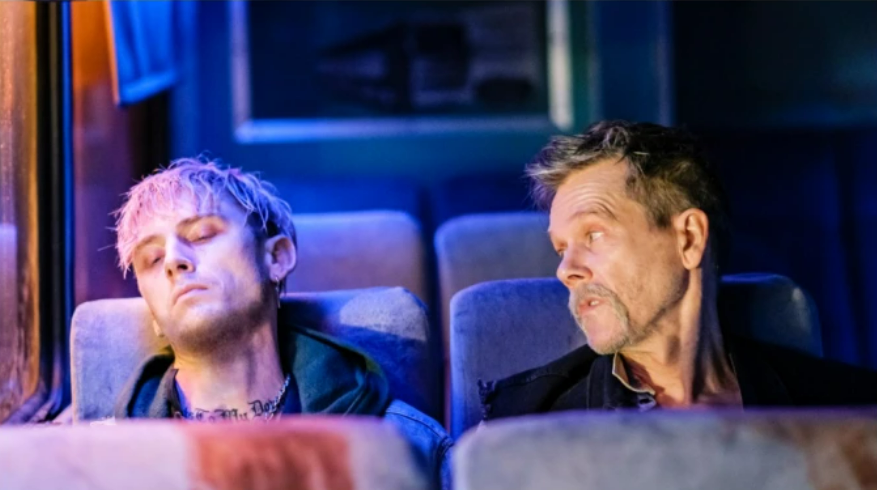
How did One Way come about?
I was in Belfast shooting Zone 414 in January 2020. Tim Palmer and Ben Conway had met each other in LA and eventually the script came my way but was, at that time, set in Ireland and was about a kid on the run between Dublin and Galway. I reached out to Martin Brennan and said that I think it could work but set in the States. I felt there was a bigger picture there. Within a day I had been sent the script. I loved it, sent it to Travis Fimmel who showed an interest. We then sent the script to Colson (who I felt was perfect for Freddy), he read it in 45 minutes on a plane and was in. Its really rare for things to proceed as quickly and seamlessly as this but there was a fate about it.
Was it challenging to get this movie off the ground?
The film is super contained which can be a worry to some sales teams in distributing the film but also in financing. Therefore it was imperative that we assembled a cast that were right for the roles but were seasoned and familiar. With Colson, Kevin, Travis, Storm and Drea – we achieved this. And again, with the film being so contained – the challenge for me and Ben was to open the film up to include locations and characters and place Colson, and his story, within a wider context.
The film is almost exclusively set at night. Was this a conscious decision early in the process?
The film was very vérité in that it was an observational, handheld approach to filming and I had this desire to shoot a noir so setting it at night-time inspires you to think more about lighting, setting etc. We initially reached out to Hi-Res in Dublin who helped with research and realized that with LED you need to keep the camera static otherwise you have to spend a fortune in post. The form and style in this movie allowed me to be more experimental throughout the process – much more so than with Zone 414.

[Tobia Sempi] The film appears to be mostly shot at night. How challenging was this in terms of ensuring the performers shine through the dark but also in post-production? Any unique techniques used to achieve the visual quality?
We would light the space and give the actors complete freedom to do what they want in it and we would run very long takes with free flowing handheld cameras reacting to what the actors do. This approach makes it feel authentic but it also helps editorial – giving lots of shots to choose from. We decided to shoot with the Sony Venice as its very sensitive to low light with Hawk anamorphic lenses. We wanted the shallow depth of field to highlight the increasingly delirious state Freddy is in, so we shot most of the film wide open. This was very challenging for our AC’s who did a terrific job keeping it all in focus with cameras constantly moving and with no set marks.
Another challenge is that its set on a bus which is a very tight space to work, especially with 2 camera teams plus the actors, and we couldn’t drive it for real because of the short schedule. We rigged lots of built in LED (with my grip and lighting team) that we could then control during the shoot from an iPad. That made our shooting very efficient. We did some testing during prep and decided on a look and built a LUT we used for the shoot. I tried to get the dailies as close to what we wanted our finished look to be. That way everybody involved in the post could ‘feel’ our vision.
We had a sort of unconventional color grading schedule that actually was very helpful. We did a session, for a week, with colorist Matt Branton where we tweaked and went through the film to get it where we wanted it to be. Then we had a break of a few months (for some tweaks). Then we did another session (for another week) where we could really dive in to details. That was actually great as we all watched the film with fresh eyes after the break. Matt did a great job and brought lots of creative ideas that brought the film to another level.
[Matt Branton / Windmill Lane Colourist] discusses the grade to support Tobia’s technical perspective.
It’s always a challenge grading night time scenes, and the large majority of the film was shot at night! Pretty much shot entirely on a moving bus, the lighting and camerawork was very dynamic and kinetic, so there are plenty of times when it can go from 100 to zero in terms of light level. This gives and takes in equal measure. This type of lighting can hide plenty of flaws, but can also prove a problem. For example – if we really need to see a key piece of dialogue which is slightly out of time with the light. This happened a few times but thankfully Baselight‘s tools were powerful enough to make this much less of a problem.
In terms of the style of grade, the narrative really lent itself to a rough and ready style grade. It’s not pretty, but it’s really not meant to be. The strong lighting pretty much dictated the colour, and most of my job was to control it, rather than create or force it. We really leant into the noise and grain, not only that was naturally there in camera, but added here and there also for effect. Also, we decided to not go too high contrast, it really didn’t suit the film, and lots of key performance and dialogue would have been lost to darkness. We really wanted to let the performances shine, and I think we really helped this with the work we did in the grade.

Critics are raving about Storm Reid’s performance. Can you tell us what it was like to work with her?
Storm is a powerhouse of a talent. It was my producer, Martin Brennan, who suggested Storm and he got it spot on. She is such a pro and her calming presence on-set tells you everything – as she was only 17 when we shot this movie. Interestingly enough – Storm was a strong influence on Colson (on set) and helped him settle into his role. I think she has a huge future.
Colson Baker is a global superstar. How did you find working with him?
Colson had just done a brilliant performance on Saturday Night Live, left the studio and was on a flight to Thomasville Atlanta to start shooting. And when he arrived we had not done a read-through or rehearsal, he was super jet lagged, was trying to figure out his wardrobe and a day later he is sitting on this bus and carrying a movie. So it speaks volumes for his dedication to the project. He loved the script and came on board almost right away. Once we had Colson, Travis and then Kevin Bacon that was our ticket to financing the film.
How was it working with Windmill Lane?
I love Windmill Lane. I have faith in the people that work with Windmill Lane and, critically, have confidence that my work will be produced to the highest quality. And I’m not talking in Ireland – I am talking globally. It really is a world class company. It was Tim Morris who convinced me to do it all through camera. And I was working with my DP Tobias and once we made the decision to shoot at night time – we shot with the Sony Venice and knew that through working with Matt Branton – we would be able to achieve the aesthetic we had envisioned. The movie was remade again with the sound design and music in Number 4. The movie is hugely dependent on sound so having this expertise in place elevated the bus journey and made it more real.

As a director – you are well know for connecting with your cast. Is this a priority for you?
For some reason I do have a skill of casting and dealing with actors one-to-one. I don’t believe in just ‘name casting’. I need to feel like they ‘are’ the characters otherwise it won’t stand up. Actors are sensitive and you need to understand that. In fact – the very first movie I made in IADT I was doing a fantasy with a good cast but I started treating them like furniture. And that’s bad. And I remember the cameraman – Fionn Commerford – said to me “you better be careful or you’ll lose your actors treating them this way”. And that was it. I have kept that with me since. You have to make them feel safe and valued. I love actors and I love working with them.
What type of experience do you hope viewers will have with One Way?
The primary aim is to entertain and engage. And that’s what a film like One Way does. It’s an intense wild ride about a dude who is trying to make up for a life of mistakes. It’s a catharsis. There is also an underlying Irish religious theme what with the blood, the punishment and the pain and almost like the stations of cross. Freddy is almost on the Jesus journey. The Catholicism is similar to what Scorsese would reference – he has informed some of my work. There is also a redemptive element to it in that Freddy has come from nothing but still has time to make things right and that is a positive angle for viewers to connect with.
Check out the latest trailer plus ticket information here: One Way Trailer & Info
